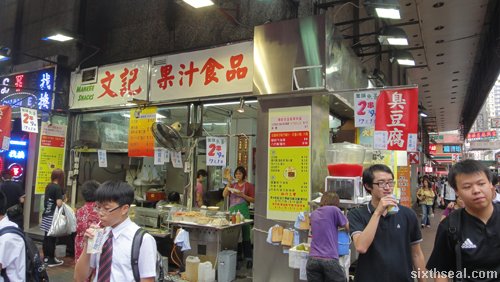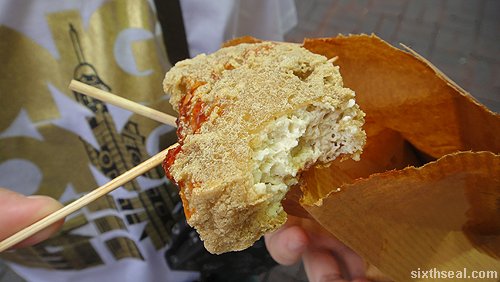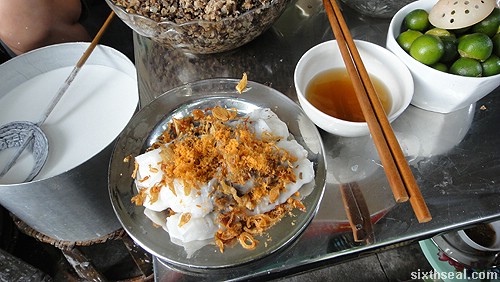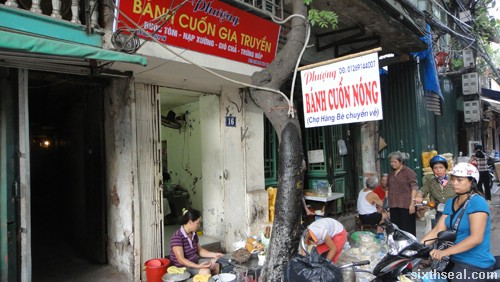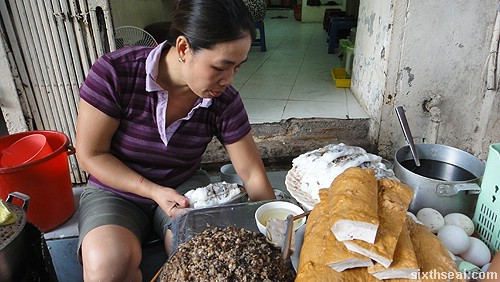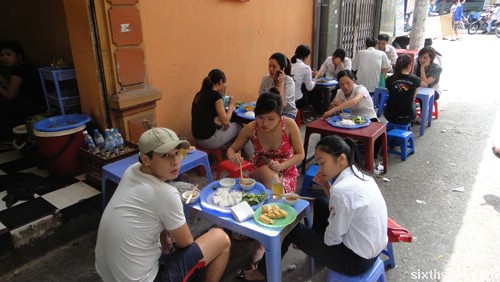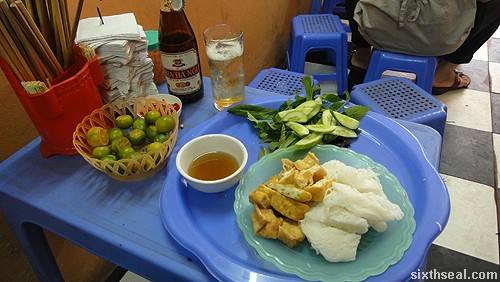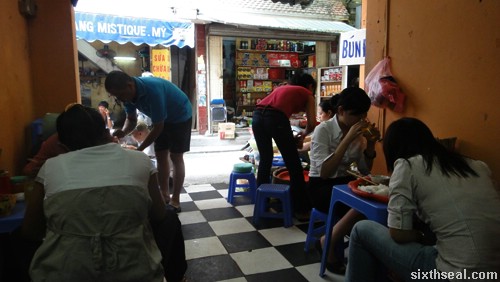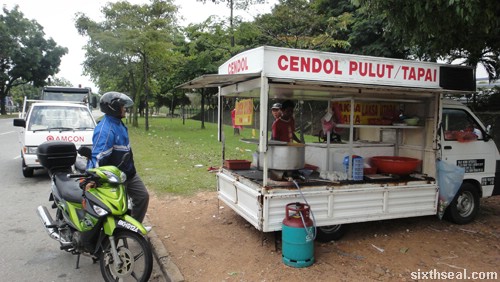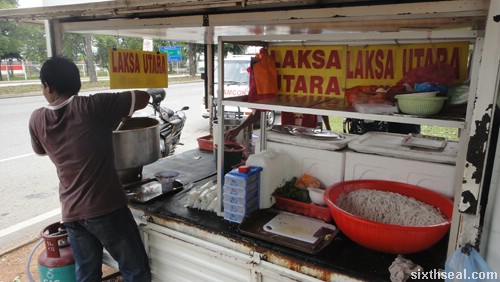
Hutong Lot 10 has some of the most established and famous stalls from all around Klang Valley located in one convenient place. If I recall correctly, the criteria for getting a stall here is very high – your street food stall needs to be a household name and it has to be in operation for at least 2-3 generations.

This is the best of the best street food KL has to offer, and we ate here *every meal* during our staycation (our hotel was right beside Lot 10). Here’s five of our favorites:
1. Cheras Woo Pin Famous Fish Head Noodles

This is the distinctive fish noodles cooked with fresh milk that’s famous over here. The broth of the fish head noodles is almost white in color, due to the addition of either fresh milk or evaporated milk. It offsets any “fishy” taste and to top it off, the fish is fried, making this a very friendly dish for people who don’t like fish.

Woo Pin Cheras Fried Fish Noodles (RM 10.85) comes with a few pieces of fish head and part of the fun is digging out the flesh from it. There’s also an option where you can add more fried fish slices for RM 21.30. My better half ordered this, I actually prefer a clean broth and blanched fish to fried fish – the latter destroys the taste but I know a lot of people like it and I’m trying to get over my discriminatory thinking. ![]()
2. Pin Qian Klang Bak Kut Teh

This is one of the best BKT or “pork rib tea” I’ve had. There are a lot of Klang Bak Kut Teh outlets around nowadays but not all of them do the dish justice. Pin Qian has been operating since 1986 and they also have an outlet in Hutong Lot 10 (at ridiculously high prices).

I had a small mixed bowl of fat and lean pork belly with a side of rice for RM 18.20 (over RM 20 after tax and the mandatory tissue packet). There’s always a long queue to get this though coz it’s absolutely fantastic – the meat is fork-tender and the herbal soup is so thick, it’s divine!
3. China Town Seng Kee Claypot Chicken Rice

This is the sister outlet of the famous place in Petaling Street. It was actually the first place I ever tasted “KL style” Claypot Chicken Rice as a kid. We were living in Sibu and came to KL for a family vacation and my dad brought us here since he missed eating this from when he was himself a university student.

I love the crispy caramelized rice at the bottom of the sizzling hot claypot which you have to dig out! I ordered it with an extra egg cracked on top for RM 14.25. It’s delicious but China Town See Keng in Petaling Street is more famous for their Claypot Loh Shu Fan, which they also serve here in their Hutong Lot 10 branch.
4. Imbi Road Original Pork Noodle

This is an awesome place to eat if you love pork although I still think the original outlet in Jalan Imbi is better. The RM 9.90 bowl of pork noodles here is made by foreign cooks and although the same process and recipes are used, as you can see in this video:
It somehow tastes better at the founding outlet.

This isn’t my taste buds playing tricks with me or ambiance issues, there is also another famous noodle stall at Hutong Lot 10 – this time dedicated to our bovine instead of porcine friends – Soong Kee Beef Noodles, and it tastes the same as the first outlet.
5. Tai Lei Loi Kei Macau

Yup, the wildly famous Macau establishment which everyone goes to for the esteemed Macau Pork Bun has an outlet at Hutong Lot 10 too! They had a loop of Anthony Bourdain visiting their original Macau outlet in Tai Lei Loi Kei Taipa playing on a TV in an episode of No Reservations.

The RM 13.90 Choapa Bao (Pork Chop Bun) here is decent, but not as good as the one I had in Macau. We ordered one to share and found the pork chop itself to be slightly overcooked and overseasoned. I did find one inch of juicy meat though but unfortunately the rest of the (rather large) pork chop was dry.








